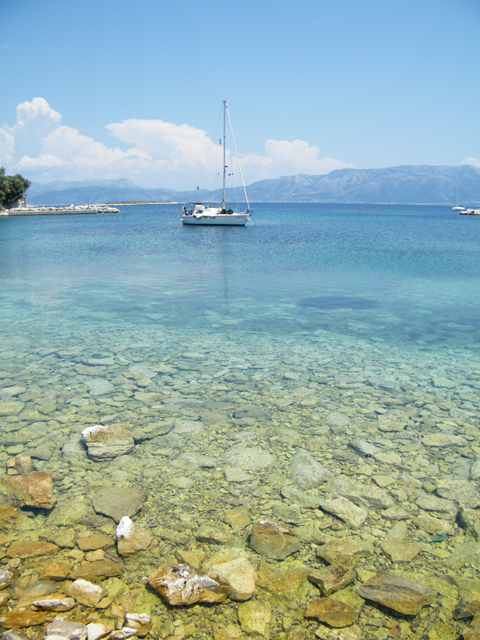
Go to ... |
Moving and sittingPage 2 - Sitting still(>> page 1 - Moving)
We think there's little better in life than swinging gently to anchor in an empty sheltered bay with warm clear cerulean water full of little entertaining fish that take crumbs of bread from our fingers as we swim gently, soaking up the sun as we go. And later with friends in the cockpit sharing good conversation and a glass of wine before sleeping safe and sound until dawn. Mmmm..., well it does happen when we get all the factors lined up - location, weather, and the correct anchoring technique.
Top of page | Go back | Home |
Google Ads, everyone has them but they'll bring us a few pennies if you click on one, thanks.
|

|
||
How we anchor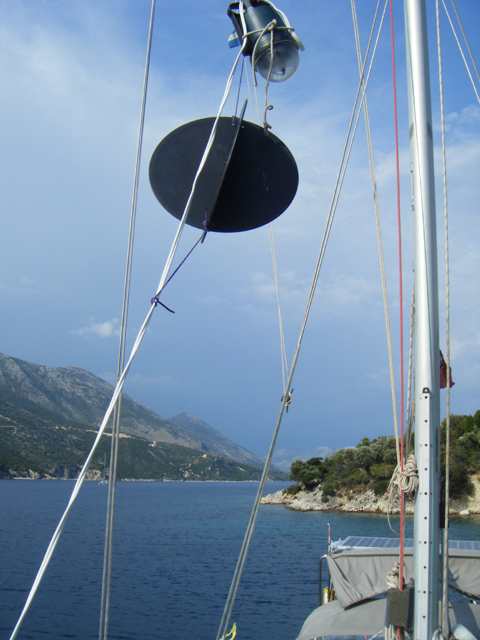
If actual anchoring is easy judging where to drop it isn't. We do it like this: In an empty anchorage, where we are first to arrive, all we do is motor slowly into the wind until we have enough space around us to swing (we will swing slowly, driven by wind changes) and lay three times the water depth of chain or twenty metres whichever is the greater by motoring backwards slowly or letting the breeze take us. When the anchor bites we dig it in with some serious stern throttle. Then we wait five minutes before we stop the engine just in case we've got it wrong and we start changing position.
Top of page | Go back | HomeStern anchor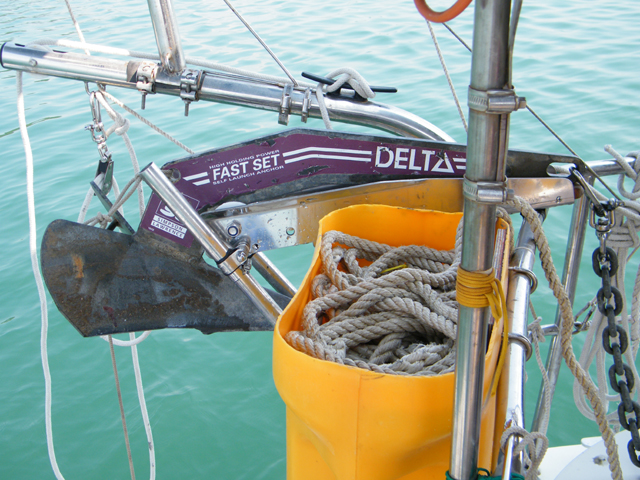
The 10 kg Delta stern anchor lives in a chute that hangs over the pushpit. Attached to the anchor via a swivel is ten metres of 10mm chain and thirty metres of 12mm laid nylon rope. The whole rode lives in a bucket which used to be a fuel can bolted to the pushpit. One trick we can pass on is to flake the rode into the bucket in a figure-of-eight configuration so that the clockwise and anti-clockwise twists even out as the rope goes straight. This strategy prevents hockles. Sometimes we tie a buoy to the anchor but after one enterprising yachtie tried to tie his boat to it we more often don't these days. We do slide the chum weights a few metres along the line to sink it beneath passing props though. To haul the anchor in we often use the sheet winch which saves straining backs.
♥♥♥♥♥
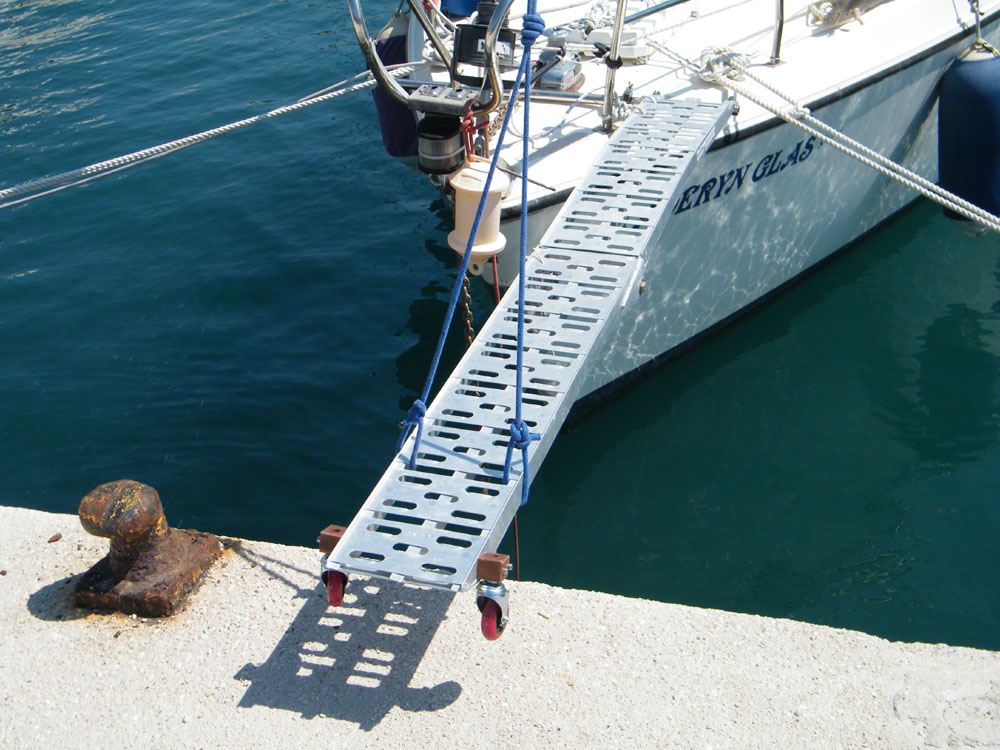
How we moor
The Eclipse doesn't steer in reverse until she's gone about 50m and is travelling at about three knots, consequently stern mooring to a quayside was out of the question for many years, even if we didn't have all the kit hanging over the stern. But when we fitted the new motorcycle ramp-passerelle we also provided anchoring points on the stern and, since 2015, have started to go stern-to. It is difficult and, in a cross-wind, impossible; but we keep practising. Bows to a quayside is easy, we really just have to drive up to the quay and stop in time. The stern is either held by the anchor or, in a marina and some enlightened ports, a lazy line. Actually, we find lazy lines more difficult to handle than anchors when arriving because of the need to move it along the boat's deck dodging the fenders and everything else, but they really are welcome when leaving - throw it into the water and wait until it's sunk beneath the level of the prop and off you go. Stern-to is another matter entirely but the ease with which the anchor can be recovered and the boat moved quickly away from the quay make it worth persevering with. Whether you want the cockpit against the quay or remote from it is also a consideration when you decide which way to approach.
Top of page | Go back | HomeGetting the weather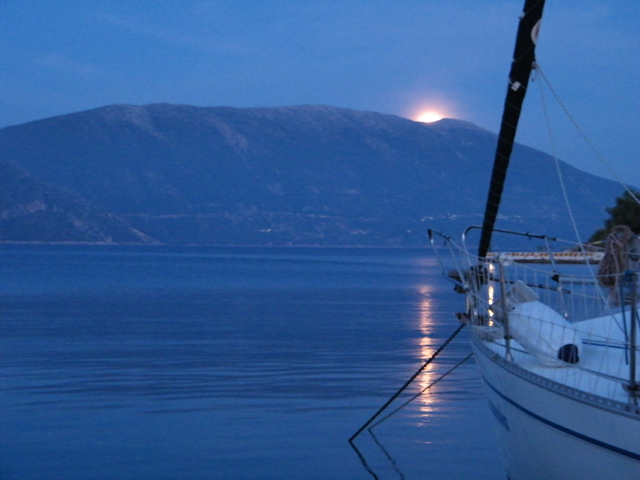
Of course we need weather forecasts before we sail anywhere. The quality of these varies throughout that part of the Med we've sailed - from France (you need to speak French) through Italy (Metal Martha reads an English version at regular intervals on VHF) to Greece where you really need the internet or Navtex. We have a Navtex although coverage and signal strength seem to vary hugely over the area we sail in.♥
Safety on a mooring
Sitting or moving is never completely risk free and so we have a lot of alarms on board. For ultimate safety we have a gas alarm, a smoke alarm, a carbon monoxide alarm and a flood alarm. On top of these we have an exhaust temperature alarm and a fridge overheat alarm (we've already mentioned: failure of the fridge is considered a catastrophe!). ♥♥♥♥♥ (>> page 1 - Moving)Top of page | Go back | Home |
||


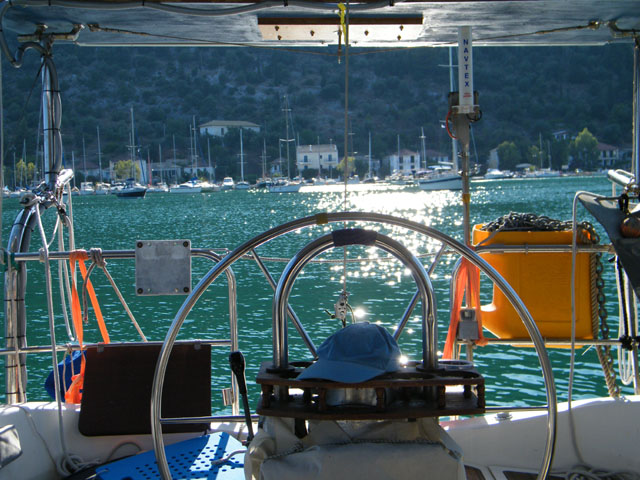

 In 2016 we changed our bow anchor from a CQR to a 15kg Rocna coupled to eighty metres of 8mm chain. ♥♥♥♥♥ Rocnas are reputedly the best anchor you can get for a small boat and it's the only one of our three (CQR, Delta, Rocna) that holds in sand. We should add that we're always careful to have a look at the anchor to see if it's bitten before we rely on it particularly if the bottom is sandy. But that's easy in the Ionion, a snorkel and mask is all that's needed. Our stern anchor is a 10kg Delta which is a good substitute for the Rocna if we ever need it. ♥♥♥♥♥ We sometimes use chum weights too, 10kg of rubber encased barbell weights from the local sports shop. In port we use them on the stern line to take the line down and clear of any propellers going passed too close, on the bow line they are equivalent to extra chain.♥♥♥♥♥ The GPS has an anchor alarm which we always set and the iPhone and Android have free anchor drag apps too.
In 2016 we changed our bow anchor from a CQR to a 15kg Rocna coupled to eighty metres of 8mm chain. ♥♥♥♥♥ Rocnas are reputedly the best anchor you can get for a small boat and it's the only one of our three (CQR, Delta, Rocna) that holds in sand. We should add that we're always careful to have a look at the anchor to see if it's bitten before we rely on it particularly if the bottom is sandy. But that's easy in the Ionion, a snorkel and mask is all that's needed. Our stern anchor is a 10kg Delta which is a good substitute for the Rocna if we ever need it. ♥♥♥♥♥ We sometimes use chum weights too, 10kg of rubber encased barbell weights from the local sports shop. In port we use them on the stern line to take the line down and clear of any propellers going passed too close, on the bow line they are equivalent to extra chain.♥♥♥♥♥ The GPS has an anchor alarm which we always set and the iPhone and Android have free anchor drag apps too.